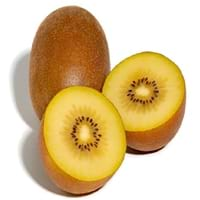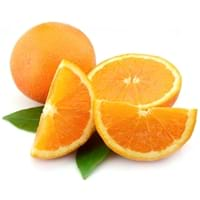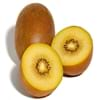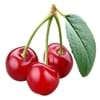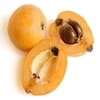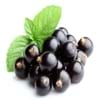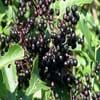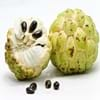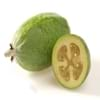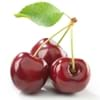Health Benefits
Asthma treatment, Heart care, Improves stomach health, Regulation of heart rate, Treatment of skin Diseases
Arthritis treatment, Cancer prevention, Heart care
General Benefits
Boosts immune system, Controls blood pressure, Eye care, Helps in weight loss
Anti-inflammatory properties, Cures cough, Cures fever, Digestive aid, Healing of wounds, Maintains healthy cholesterol level
Skin Benefits
Brightens and lightens complexion, Heals sunburn, Reduces wrinkles, Skin rejuvenation, Treatment of acne, Treatment of dark spots, Treatment of skin diseases
Anti-aging benefits, Brightens and lightens complexion, Reduces wrinkles, Treatment of dark spots
Hair Benefits
Prevents hair loss, Promotes longer and healthier hair, Treatment of dandruff
Promotes longer and healthier hair, Protects hair, Rejuvenates scalp, Shiny hair
Allergy Symptoms
Abdominal pains, Anaphylaxis, Breathing difficulty, Itching in tongue and other parts of mouth, Itching sensation in throat, Swelling of mouth, tongue or lips, Vomiting
Abdominal cramps, Hives, Itching, Nausea, Wheezing
Side Effects
Allergic reaction, Diarrhoea, Skin rash, Possibly unsafe during pregnancy
Allergic reaction, Skin rash, Possibly unsafe during pregnancy
Best Time to Eat
Any time except an hour after meal
As a snack in the late afternoon, Eat the fresh ones, avoid mixing with any other foods, don't eat after meal., Morning time (before lunch), Strictly avoid empty stomach
Vitamin B5 (Pantothenic Acid)
Vitamin C (Ascorbic Acid)
Vitamin K (Phyllochinone)
Calories in Fresh Fruit with Peel
Not Available
Calories in Fresh Fruit without Peel
Not Available
Calories in Frozen Form
Not Available
Not Available
Season
Spring, Summer, Winter
Winter
Varieties
Qing Yuan #27, Qing Yuan #29, Qing Yuan #6 and Huang Yan
Clementine, Dancy, King Mandarin, Murcott, Ponkan, Robinson, Satsuma and Sunburst
Color
Brown, Yellow
Orange
Inside Color
Yellow
Orange
Texture
Succulent
Succulent
Origin
China
South-Eastern Asia
Grows on
Vines
Not Available
Soil Type
Well-drained
Well-drained
Climatic Conditions
Cold, Sunny
Sunny
Facts about
- The name Kiwi is due to its resemblance with 'Kiwi' bird.
- This variety of Kiwi was developed by New Zealand, it is not fuzzy on the outside and it has a taste reminiscent of the mango fruit.
- It is known by another name ' Mandarin'.
- Oil extracted from its peel is used in various skin and hair care products.
- Tangerines is also known as the ‘Christmas Orange’ because it is used to stuff kids' stockings..
Spirits
Yes
Not Available
Cocktails
Yes
Not Available
Other Countries
Chile, France, Greece, Iran, Japan, New Zealand, Portugal, Turkey, United States of America
Brazil, Iran, Italy, Japan, Korea, Morocco, Spain, Turkey
Top Importer
United States of America
China
Top Exporter
New Zealand
Spain
Botanical Name
Actinidia chinensis
Citrus reticulata
Synonym
Not Available
Citrus clementina or Citrus nobilis
Subkingdom
Tracheobionta
Tracheobionta
Division
Magnoliophyta
Magnoliophyta
Class
Magnoliopsida
Magnoliopsida
Subclass
Dillenhidae
Rosidae
Order
Ericales
Sapindales
Family
Actinidiaceae
Rutaceae
Species
A. chinensis
C. reticulata
Generic Group
Kiwi
Citrus fruit
Difference Between Gold Kiwi and Tangerine
We might think that Gold Kiwi and Tangerine are similar with respect to nutritional value and health benefits. But the nutrient content of both fruits is different. Gold Kiwi and Tangerine Facts such as their taste, shape, color, and size are also distinct. The difference between Gold Kiwi and Tangerine is explained here.
The amount of calories in 100 gm of fresh Gold Kiwi and Tangerine with peel is 60.00 kcal and Not Available and the amount of calories without peel is Not Available and 53.00 kcal respectively. Thus, Gold Kiwi and Tangerine belong to Low Calorie Fruits and Low Calorie Fruits category.These fruits might or might not differ with respect to their scientific classification. The order of Gold Kiwi and Tangerine is Ericales and Sapindales respectively. Gold Kiwi belongs to Actinidiaceae family and Tangerine belongs to Rutaceae family. Gold Kiwi belongs to Actinidia genus of A. chinensis species and Tangerine belongs to Citrus genus of C. reticulata species. Beings plants, both fruits belong to Plantae Kingdom.
